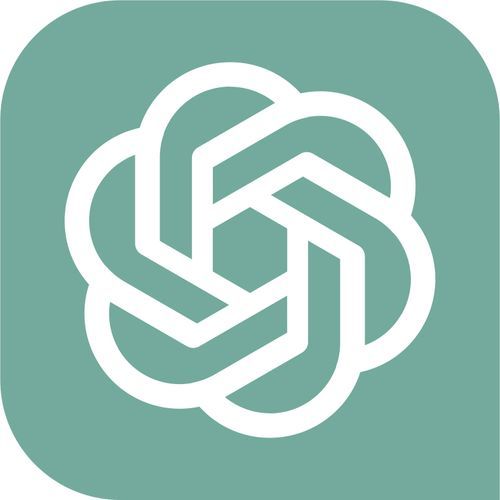Library of teambuilding games & icebreakers


Around the horn
About as simple and traditional as it gets, this icebreaker involves a facilitator simply asking everyone to introduce themselves to the group. Keep things concise by asking everyone to share their name, role, region, and maybe one fun fact or otherwise light-hearted bit of information. Some people have people state what they are excited to learn in the session or what is most on their minds, work-wise.
Around the horn
How to play Around the horn
About as simple and traditional as it gets, this icebreaker involves a facilitator simply asking everyone to introduce themselves to the group. Keep things concise by asking everyone to share their name, role, region, and maybe one fun fact or otherwise light-hearted bit of information. Some people have people state what they are excited to learn in the session or what is most on their minds, work-wise.
Gallery



Video


Cup toppers
For this game you’ll need some cups or tumblers and some old compact discs. Place the cup a reasonable amount of space away from the player (such as a few feet, across a table). Have them take a stack of CDs and toss them, one by one, onto the cup. Their goal is to land as many as they can flat onto the top of the cup. Whoever strikes the most landings wins.
Cup toppers
How to Cup toppers
For this game you’ll need some cups or tumblers and some old compact discs. Place the cup a reasonable amount of space away from the player (such as a few feet, across a table). Have them take a stack of CDs and toss them, one by one, onto the cup. Their goal is to land as many as they can flat onto the top of the cup. Whoever strikes the most landings wins.
Gallery



Video


Alphabets
Last but not least, we have Alphabets. It’s another improv game that’s as simple as it is fun, making it ideal for virtual meetings. All participants have to do is work together to create a story from scratch, contributing one line at a time. However, the complicating factor is that each line must begin with the next letter of the alphabet!
Alphabets
Last but not least, we have Alphabets. It’s another improv game that’s as simple as it is fun, making it ideal for virtual meetings. All participants have to do is work together to create a story from scratch, contributing one line at a time. However, the complicating factor is that each line must begin with the next letter of the alphabet!
How to play Alphabets
For example:
- Participant 1: “A long time ago, in a distant land…”
- Participant 2: “Benjamin the Brilliant was building his next great invention.”
- Participant 3: “Crikey, said the inventor…”
- Participant 4: “Don’t people know the world is on the brink of collapse?”
- Participant 5: “Especially now that aliens have landed in America.”
Keep going until the end of the alphabet, or when everyone’s spoken at least once.
Oh, and encourage the team to be as creative as possible. The more random details and unexpected plot twists, the better. The exercise should be about having fun and getting everyone involved – not necessarily about creating a world-class story!
Consider setting a general topic to guide the task too. Maybe it should be a story about pirates, for instance, or dinosaurs…or the team’s next Christmas party.
You can also mix things up by giving people less and less time to contribute the next line. The added pressure keeps the game moving, stops it from getting dull, and requires your employees to think on their feet.
Gallery



Video


Office Jenga with a twist
It’s just like Giant Jenga, but with each block having a fun little challenge written on it—like balancing the piece on your head or doing a dance before placing it.For the hybrid version, the in-office team plays with the physical Jenga set, while remote workers jump in by picking the challenges for their in-office teammates. For example, as the in-office group pulls a block, a remote teammate gives them a challenge to complete before placing the block back on the tower. Remote players can also participate by tracking the game and offering ideas for wacky tasks. It’s a great way to include everyone and keep the laughs going, no matter where people are.
Office Jenga with a twist
Explanation:
It’s just like Giant Jenga, but with each block having a fun little challenge written on it—like balancing the piece on your head or doing a dance before placing it.
For the hybrid version, the in-office team plays with the physical Jenga set, while remote workers jump in by picking the challenges for their in-office teammates. For example, as the in-office group pulls a block, a remote teammate gives them a challenge to complete before placing the block back on the tower. Remote players can also participate by tracking the game and offering ideas for wacky tasks. It’s a great way to include everyone and keep the laughs going, no matter where people are.
Gallery



Video


Simple stretching
Sometimes, just moving your body and getting some good, deep breaths is enough. Several times throughout the day, use the natural breaks that occur to have everyone stand up and stretch. If you want to be more formal, you could have a team leader facilitate some group stretching or even introduce a short yoga session. As long as you can get people’s bodies moving, it’s a great thing. Plus - it’s free and no special supplies are needed!
Simple stretching
How to play Simple stretching
Sometimes, just moving your body and getting some good, deep breaths is enough. Several times throughout the day, use the natural breaks that occur to have everyone stand up and stretch. If you want to be more formal, you could have a team leader facilitate some group stretching or even introduce a short yoga session. As long as you can get people’s bodies moving, it’s a great thing. Plus - it’s free and no special supplies are needed!
Gallery



Video


Human machine
Effective collaboration is an important part of a well-functioning team. This training game is a great way to encourage strong cooperation. Have everyone stand in a circle with one person in the middle. They should mimic part of a “machine” by making appropriate sounds or motions. After 5 seconds, another person should enter and connect to the first person, also making the right “machine” sounds and motions. Every 5 seconds a new person joins, until everyone is connected as a well-running machine. This game is also good if you’re looking for some physical activity to break up a long day, or a quick office game.
Human machine
How to play Human machine
Effective collaboration is an important part of a well-functioning team. This training game is a great way to encourage strong cooperation. Have everyone stand in a circle with one person in the middle. They should mimic part of a “machine” by making appropriate sounds or motions.
After 5 seconds, another person should enter and connect to the first person, also making the right “machine” sounds and motions. Every 5 seconds a new person joins, until everyone is connected as a well-running machine. This game is also good if you’re looking for some physical activity to break up a long day, or a quick office game.
Gallery



Video


Back-to-back drawing
The perfect game for the artists on the team, Back-to-Back drawing encourages play and communication and would be an excellent activity for a company retreat. This team-building exercise is less about problem-solving and relaxing and getting the chance to get to know one another.
Back-to-back drawing
The perfect game for the artists on the team, Back-to-Back drawing encourages play and communication and would be an excellent activity for a company retreat. This team-building exercise is less about problem-solving and relaxing and getting the chance to get to know one another.
How to play:
Have players split into two teams and face away from one another. One player gets a picture, and the other receives paper and drawing materials. The person with the image describes what and how to draw the image without identifying it. After ten minutes, players swap roles.
After each team member has described the object and produced an image, they can compare their work and see who made the most accurate drawing.
Materials you’ll need: Art supplies and simple images (think flowers, cars, etc.) taken from a magazine or printed online.
How many people: Small to mid-sized teams (8-16 people)
Gallery



Video


Safety slogan contest
Encourage employees to create catchy safety slogans that promote workplace safety. Have a panel of judges select the best slogans and award prizes to the winners. Display the winning slogans around the workplace.This activity taps into employees' creativity and gives them a sense of ownership over the safety culture. Seeing their own slogans around the workplace can be a source of pride and motivation. The next "Safety First!" slogan might just be around the corner.
Safety slogan contest
How to play:
Encourage employees to create catchy safety slogans that promote workplace safety. Have a panel of judges select the best slogans and award prizes to the winners. Display the winning slogans around the workplace.
This activity taps into employees' creativity and gives them a sense of ownership over the safety culture. Seeing their own slogans around the workplace can be a source of pride and motivation. The next "Safety First!" slogan might just be around the corner.
Gallery



Video


Secret word
Insert some fun and laughter into your everyday office work by playing this silly game. To play, start by writing down any word on a piece of paper (An object or action is usually easiest). Choose your first participant and have them place the paper on their forehead (without looking at it). It’s key that the player doesn’t know what word they are displaying! Other players should gesture to try to get them to guess the word without actually speaking. The person with the card will try to guess the word based on the actions of everyone around them.
Secret word
How to play Secret word
Insert some fun and laughter into your everyday office work by playing this silly game. To play, start by writing down any word on a piece of paper (An object or action is usually easiest). Choose your first participant and have them place the paper on their forehead (without looking at it). It’s key that the player doesn’t know what word they are displaying! Other players should gesture to try to get them to guess the word without actually speaking. The person with the card will try to guess the word based on the actions of everyone around them.
Gallery



Video


Emergency drill simulation
Organize a mock emergency drill where employees must respond to a simulated emergency scenario (e.g., fire, chemical spill, medical emergency). Debrief after the drill to discuss what went well and areas for improvement.Simulations provide hands-on practice in a controlled environment, helping employees feel more confident in real emergencies. It’s a practical way to test and improve response procedures while highlighting the importance of being prepared. While this isn’t really classed as a ‘game’, it’s certainly a safety activity that could be beneficial to everyone in the event of an emergency.
Emergency drill simulation
How to play:
Organize a mock emergency drill where employees must respond to a simulated emergency scenario (e.g., fire, chemical spill, medical emergency). Debrief after the drill to discuss what went well and areas for improvement.
Simulations provide hands-on practice in a controlled environment, helping employees feel more confident in real emergencies. It’s a practical way to test and improve response procedures while highlighting the importance of being prepared. While this isn’t really classed as a ‘game’, it’s certainly a safety activity that could be beneficial to everyone in the event of an emergency.
Gallery



Video


Picnic power hour
Take things easy with picnic power hour! Head to a local park for a relaxed team picnic, complete with blankets, snacks, and good conversation. It’s a casual way to bond outside of the office and enjoy some downtime together.This low-key activity encourages relaxation, conversation, and unwinding as a team in a peaceful setting.
Picnic power hour
Take things easy with picnic power hour! Head to a local park for a relaxed team picnic, complete with blankets, snacks, and good conversation. It’s a casual way to bond outside of the office and enjoy some downtime together.
This low-key activity encourages relaxation, conversation, and unwinding as a team in a peaceful setting.
How to play:
- Pack up some food, drinks, and blankets for a team picnic.
- Head to a nearby park and enjoy a laid-back hour of chatting and snacking.
- Use the time to bond casually and recharge in nature!
Gallery



Video


Among us
If you're a younger team with an appetite for video games, this might be worth a try!Among Us is an online game where an ‘imposter’ attempts to eliminate members of the ‘crew’ without being discovered.The game can only be played by a maximum of ten players, so you might want to consider putting together a league if you have a larger workforce.
Among us
If you're a younger team with an appetite for video games, this might be worth a try!
Among Us is an online game where an ‘imposter’ attempts to eliminate members of the ‘crew’ without being discovered.
How to play Among us
The game can only be played by a maximum of ten players, so you might want to consider putting together a league if you have a larger workforce.
Gallery



Video


Who did it?
This game is helpful for learning about what your colleagues do outside of work. To begin with, everyone should get a piece of paper and pen, and write down one interesting thing they’ve done. Then, all the notes are placed in a container, and a facilitator pulls them out one at a time and reads them alive. Everyone else in the room should guess who the individual was who completed that activity. For example, if one prompt is “skydiving”, then everyone would guess who among them was most likely to have done that. The more creative people get, the better!
Who did it?
How to play Who did it?
This game is helpful for learning about what your colleagues do outside of work. To begin with, everyone should get a piece of paper and pen, and write down one interesting thing they’ve done. Then, all the notes are placed in a container, and a facilitator pulls them out one at a time and reads them alive. Everyone else in the room should guess who the individual was who completed that activity. For example, if one prompt is “skydiving”, then everyone would guess who among them was most likely to have done that. The more creative people get, the better!
Gallery



Video


Name that tune
This classic never gets old. Play five-second snippets of 12 songs - this will total one minute. Have players write down each song they think they heard. Whoever has the most correct answers wins! You can streamline this process by creating your one-minute compilation in advance, so you don’t have to keep stopping and starting music.
Name that tune
How to play Name that tune
This classic never gets old. Play five-second snippets of 12 songs - this will total one minute. Have players write down each song they think they heard. Whoever has the most correct answers wins! You can streamline this process by creating your one-minute compilation in advance, so you don’t have to keep stopping and starting music.
Gallery



Video


What’s new (in my office)?
If you have a lot of virtual meetings with the same people, it can be a fun idea to throw in some changes now and then. For this game, send out a note prior to the meeting instructing everyone to add one new thing to their normal working space or background. Then, during the meeting, everyone should take turns observing the work space of their colleagues and seeing if they can point out what’s new. The new item can be anything from a plant on the desk to a silly poster on the wall. Obviously, this game only works well for people who are used to being in virtual events in the same space with their camera on. For that reason, it’s a nice way to mix up daily status meetings or weekly department meetings.
What’s new (in my office)?
How to play What’s new (in my office)?
If you have a lot of virtual meetings with the same people, it can be a fun idea to throw in some changes now and then. For this game, send out a note prior to the meeting instructing everyone to add one new thing to their normal working space or background. Then, during the meeting, everyone should take turns observing the work space of their colleagues and seeing if they can point out what’s new.
The new item can be anything from a plant on the desk to a silly poster on the wall. Obviously, this game only works well for people who are used to being in virtual events in the same space with their camera on. For that reason, it’s a nice way to mix up daily status meetings or weekly department meetings.
Gallery



Video


Squirt Gun Water Races
Squirt gun water races are an exciting alternative to traditional water fights. To play, you’ll need plastic cups (one per team of two people), string, scissors, duct tape, and enough squirt guns for every second person in the group (i.e., 10 people will need at least 5 squirt guns). Set up for the game by: Making a small hole at the bottom of each cup, close to the edge Threading a long line of string (e.g., 15 feet long) through each cup Use duct tape to suspend the string between two fixed points that are slightly closer together than the length of the string (e.g., a tree and fence about 12 feet away from each other). The cups should be facing the same direction Play the game by: Dividing into pairs and blindfolding one member of each Giving the blindfolded members a squirt gun Ensuring the cup starts at the end of the string, closest to the teams Pitting pairs against each other to see who can squirt water into their cup fastest, pushing it to the other end of the string The first pair to get their cup to the other end wins. Of course, only one member can see what’s happening! The sighted person must communicate effectively to guide their partner in the right direction. Squirt gun water races are unique, exciting, and awesome for team-building. Yet another benefit is that they’re accessible to everyone. Unlike other Field Day games for adults that involve physical activity, you only need the ability to fire a water gun!
Squirt Gun Water Races
Squirt gun water races are an exciting alternative to traditional water fights. To play, you’ll need plastic cups (one per team of two people), string, scissors, duct tape, and enough squirt guns for every second person in the group (i.e., 10 people will need at least 5 squirt guns).
How to play Squirt Gun Water Races
Set up for the game by:
- Making a small hole at the bottom of each cup, close to the edge
- Threading a long line of string (e.g., 15 feet long) through each cup
- Use duct tape to suspend the string between two fixed points that are slightly closer together than the length of the string (e.g., a tree and fence about 12 feet away from each other). The cups should be facing the same direction
Play the game by:
- Dividing into pairs and blindfolding one member of each
- Giving the blindfolded members a squirt gun
- Ensuring the cup starts at the end of the string, closest to the teams
- Pitting pairs against each other to see who can squirt water into their cup fastest, pushing it to the other end of the string
The first pair to get their cup to the other end wins. Of course, only one member can see what’s happening! The sighted person must communicate effectively to guide their partner in the right direction.
Squirt gun water races are unique, exciting, and awesome for team-building. Yet another benefit is that they’re accessible to everyone. Unlike other Field Day games for adults that involve physical activity, you only need the ability to fire a water gun!
Gallery



Video


TV On; Sound Off
Can you imagine a scenario where the TV is on mute and you lose the remote? Well, as horrific as this may sound, there may be some fun in this. Welcome to TV On Sound Off - an engaging activity that sharpens your active observation and interpretation skills.
TV On; Sound Off
Can you imagine a scenario where the TV is on mute and you lose the remote? Well, as horrific as this may sound, there may be some fun in this. Welcome to TV On Sound Off - an engaging activity that sharpens your active observation and interpretation skills.
How to play
- Assemble your colleagues in a comfortable space with a TV or projector where you can watch a show or movie of your choice.
- Turn off the sound completely, no subtitles allowed. You're going to rely solely on visual cues.
- Start with a scene from the show or movie. Make sure it has a mix of dialogue and action.
- Each participant takes turns guessing what the characters are saying and what's happening in the plot. Keep it concise and imaginative.
- After everyone has had a turn, unmute the sound and compare your guesses with what actually transpired in the scene.
- Discuss what you've learned about active observation, interpretation, and the value of non-verbal cues.
Gallery



Video


Posture obstacle course
If you have a space that is good for moving around, such as an open concept office, you can give this one a try. Use various furnishings or furniture to create a short obstacle course that everyone must go through in one minute. The catch? They need to balance a book on their head to ensure “proper posture”. If the book falls off they must start over. Have everyone go, one at a time, setting a minute timer for each instance.
Posture obstacle course
How to play Posture obstacle course
If you have a space that is good for moving around, such as an open concept office, you can give this one a try. Use various furnishings or furniture to create a short obstacle course that everyone must go through in one minute. The catch? They need to balance a book on their head to ensure “proper posture”. If the book falls off they must start over. Have everyone go, one at a time, setting a minute timer for each instance.
Gallery



Video


Leadership Styles Quiz
Who doesn't love personality quizzes? This activity helps team members to understand their unique leadership style and explore different approaches. By delving into the nuances of leadership styles, you'll gain self-awareness and learn how to adapt your style to different situations. It's like discovering your leadership superpower and unleashing it to save the day!
Leadership Styles Quiz
Instructions:
- Begin by researching and finding a leadership style quiz on the internet.
- Allow your team to read through the questions and ask them to choose the answer that best reflects their leadership approach.
- Once they have completed the quiz, review their results and take note of their leadership style.
- Engage in a group discussion about the different leadership styles and how they can be applied in various situations.
- Share insights on how to adapt leadership style to different scenarios.
- Encourage open communication and active listening during the discussion.
Who doesn't love personality quizzes? This activity helps team members to understand their unique leadership style and explore different approaches. By delving into the nuances of leadership styles, you'll gain self-awareness and learn how to adapt your style to different situations. It's like discovering your leadership superpower and unleashing it to save the day!
Gallery



Video


Top ten things
In this quick and easy exercise, you simply go around the (virtual) room and have everyone list the first ten words that come to mind based on a prompt. You can pick really straightforward subjects or get more creative. For example, if the topic is “Top vacation destinations”, have each person list their top ten places they’d like to visit. Or, maybe you ask for top ten names for a new puppy, or the ten worst date night destinations.
Top ten things
How to play Top ten things
In this quick and easy exercise, you simply go around the (virtual) room and have everyone list the first ten words that come to mind based on a prompt. You can pick really straightforward subjects or get more creative. For example, if the topic is “Top vacation destinations”, have each person list their top ten places they’d like to visit. Or, maybe you ask for top ten names for a new puppy, or the ten worst date night destinations.
Gallery



Video


Forensic artists
Everybody likes to draw! This game is a fun opportunity for colleagues to relax and have some fun.
Forensic artists
Everybody likes to draw! This game is a fun opportunity for colleagues to relax and have some fun. The game is very simple, and it goes like this…
How to play Forensic artists
Step 1: Split the group into teams, you can have as many teams as you like, with a minimum of two per group.
Step 2: Explain that a crime has been committed, but fortunately one person from each team spotted the suspect.
Step 3: Using a random face generator, create a face for the witnesses to describe.
Step 4: The witnesses must try their best to describe the face they are seeing to their team members.
Step 5: The other members of the teams must try to draw the face as accurately as possible based upon the descriptions.
Step 6: The team with the most accurate sketch wins!
Gallery



Video


Tug of War Challenge
Tug of War encourages teamwork, communication, and friendly competition. It promotes unity, camaraderie, and creates a sense of strength and determination among team members.
Tug of War Challenge
How to play Tug of War Challenge
Instructions: Divide participants into two teams and provide a long rope. Each team holds onto one end of the rope and pulls in opposite directions. The team that successfully pulls the other team over a designated line wins.
Materials needed: Rope.
Tug of War encourages teamwork, communication, and friendly competition. It promotes unity, camaraderie, and creates a sense of strength and determination among team members.
Gallery



Video


Storytelling Relay
Imagine sitting in a circle with your colleagues, weaving a story together one sentence at a time. This is the essence of the Storytelling Relay, a playful yet powerful activity that fosters active listening in the workplace.
Storytelling Relay
Imagine sitting in a circle with your colleagues, weaving a story together one sentence at a time. This is the essence of the Storytelling Relay, a playful yet powerful activity that fosters active listening in the workplace.
How to play
- Form a circle with your team members. Ensure everyone has a clear line of sight to the person speaking.
- The game starts with one person. They utter the opening sentence of a story, anything that comes to mind.
- The next person continues the story with a single sentence, following the lead of the previous speaker. It should make sense and smoothly connect to the previous sentence.
- Go around the circle, with each participant adding a sentence. The goal is to build a cohesive narrative.
- This is where active listening comes into play. Participants must pay close attention to the unfolding story to ensure their contributions fit seamlessly.
- It's essential not to interrupt or correct others. The story may take unexpected turns, but that's part of the fun!
- Continue until you reach a predetermined ending point or when the story feels naturally complete.
Gallery



Video


What do we have in common?
In large organizations, it can be hard to encourage interaction. Use this exercise to improve relations whether in person or in virtual meetings. The moderator should simply ask the group to come up with 5 or 10 things they all have in common. This could be a favorite pizza flavor or Starbucks order, or the ability to speak another language. Colleagues will have to have an extensive dialog to learn about each other and come up with these commonalities, which can be really beneficial for relationship-building.
What do we have in common?
How to play What do we have in common?
In large organizations, it can be hard to encourage interaction. Use this exercise to improve relations whether in person or in virtual meetings. The moderator should simply ask the group to come up with 5 or 10 things they all have in common. This could be a favorite pizza flavor or Starbucks order, or the ability to speak another language. Colleagues will have to have an extensive dialog to learn about each other and come up with these commonalities, which can be really beneficial for relationship-building.
Gallery



Video

















